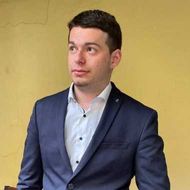- A
- A
- A
- АБB
- АБB
- АБB
- А
- А
- А
- А
- А
- Национальный исследовательский университет «Высшая школа экономики»
- Учебные подразделения
- Факультет социальных наук
- Департамент психологии
- Новости
- Лекция Эммануэля Дюпу "Моделирование ранних этапов развития речи"
-
Подразделения
- Кафедры
-
Центры и лаборатории
-
- Центр фундаментальной и консультативной персонологии
- Центр социокультурных исследований
- Научно-учебная лаборатория психологии социального неравенства
- Научно-учебная лаборатория политико-психологических исследований
- Лаборатория языковых, межкультурных и творческих компетенций
- Международная лаборатория позитивной психологии личности и мотивации
- Научно-учебная лаборатория когнитивных исследований
- Научно-учебная лаборатория когнитивной психологии пользователя цифровых интерфейсов
- Научно-учебная группа «Психология организационной коммуникации»
- Научно-учебная группа «Психология среды»
- Научно-учебная лаборатория психологии салютогенной среды
-
- Партнеры
-
Образование
- Бакалавриат
- Магистратура
- Аспирантура
- Школьникам
- Дополнительное образование
-
Департамент
Тел.: 8 (495) 772-95-90 *15366
E-mail: dekpsy@hse.ru
Фактический адрес: 101000, г. Москва, Армянский пер. 4, корп. 2
Почтовый адрес: 101000, г. Москва, ул. Мясницкая, д. 20 (департамент психологии)
Психология – одна из наиболее бурно развивающихся в настоящее время наук о человеке, включающая, с одной стороны, такие фундаментальные исследовательские направления, как общая психология и психология личности, социальная и кросскультурная психология, когнитивная психология и психофизиология, экономическая психология и психология принятия решения, а с другой – такие практико-ориентированные направления, как психологическая диагностика, индивидуальное и семейное психологическое консультирование, психоанализ, организационная психология. Все эти направления развиваются в департаменте ведущими российскими психологами, для которых выбор психологии стал выбором не только профессии, но и судьбы.
Goshin M. E., Grigoryev D., Sorokin P. S.
Frontiers in Psychology. 2025. No. 16. P. 1-10.
В кн.: Коучинг и наставничество: теория и практика : материалы II Всерос. науч.-практич. конф. (Санкт-Петербург, 27-28 февр. 2025 г.). Чебоксары: ИД «Среда», 2025.
Ivanova M., Germanova K., Petelin D. et al.
Biorxiv. 005140. Cold Spring Harbor Laboratory, 2024
Тел.: 8 (495) 772-95-90 *15366
E-mail: dekpsy@hse.ru
Фактический адрес: 101000, г. Москва, Армянский пер. 4, корп. 2
Почтовый адрес: 101000, г. Москва, ул. Мясницкая, д. 20 (департамент психологии)

Лекция Эммануэля Дюпу "Моделирование ранних этапов развития речи"
Human infants learn spontaneously and effortlessly the language(s) spoken in their environments, despite the extraordinary complexity of the task. In the past 30 years, tremendous progress has been made regarding the empirical investigation of the linguistic achievements of infants during their first two years of life. In that short period of their life, infants learn in an essentially unsupervised fashion the basic building blocks of the phonetics, phonology, lexical and syntactic organization of their native language (see Jusczyk, 1987). Yet, little is known about the mechanisms responsible for such acquisitions. Do infants rely on general statistical inference principles? Do they rely on specialized algorithms devoted to language?
Here, I will present an overview of the early phases of language acquisition and focus on one area where a modeling approach is currently being conducted, using tools of signal processing and automatic speech
recognition: the unsupervised acquisition of phonetic categories. It is known that during the first year of life, before they are able to talk, infants construct a detailed representation of the phonemes of their native language and loose the ability to distinguish nonnative phonemic contrasts (Werker & Tees, 1984). It will be shown that the only mechanism that has been proposed so far, that is, unsupervised statistical clustering (Maye, Werker and Gerken, 2002), may not converge on the inventory of phonemes, but rather on contextual allophonic units that are smaller than the phoneme (Varadarajan, 2008). Alternative algorithms will be presented using three sources of information: the statistical distribution of their contexts, the phonetic plausibility of the grouping, and the existence of lexical minimal pairs (Peperkamp et al., 2006; Martin et al, submitted). It is shown that each of the three sources of information can be acquired without presupposing the others, but that they need to be combined to arrive at good performance. Modeling results and experiments in human infants will be presented.
- О ВЫШКЕ
- Цифры и факты
- Руководство и структура
- Устойчивое развитие в НИУ ВШЭ
- Преподаватели и сотрудники
- Корпуса и общежития
- Закупки
- Обращения граждан в НИУ ВШЭ
- Фонд целевого капитала
- Противодействие коррупции
- Сведения о доходах, расходах, об имуществе и обязательствах имущественного характера
- Сведения об образовательной организации
- Людям с ограниченными возможностями здоровья
- Единая платежная страница
- Работа в Вышке
- ОБРАЗОВАНИЕ
- Лицей
- Довузовская подготовка
- Олимпиады
- Прием в бакалавриат
- Вышка+
- Прием в магистратуру
- Аспирантура
- Дополнительное образование
- Центр развития карьеры
- Бизнес-инкубатор ВШЭ
- Образовательные партнерства
- Обратная связь и взаимодействие с получателями услуг
-
http://www.minobrnauki.gov.ru/
Министерство науки и высшего образования РФ
-
https://edu.gov.ru/
Министерство просвещения РФ
-
http://www.edu.ru
Федеральный портал «Российское образование»
-
https://elearning.hse.ru/mooc
Массовые открытые онлайн-курсы
- © НИУ ВШЭ 1993–2025 Адреса и контакты Условия использования материалов Политика конфиденциальности Карта сайта
- Редактору


